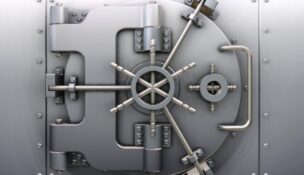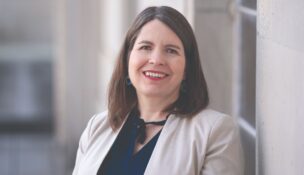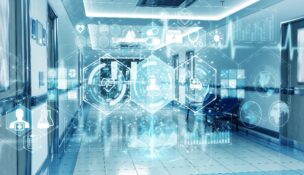South Carolina economists: market bullish despite interest rate spike
By Molly Hulsey, contributing writer //May 10, 2024//

South Carolina economists think that impact of increased interest rates could be short-lived in the state. (Photo/Molly Hulsey)

South Carolina economists think that impact of increased interest rates could be short-lived in the state. (Photo/Molly Hulsey)
South Carolina economists: market bullish despite interest rate spike
By Molly Hulsey, contributing writer //May 10, 2024//
The Federal Reserve has yet to reach its goal of 2% inflation but expects to cut its interest rate later this year, according to Reserve Chair Jerome Powell.
“Tight monetary policy continues to weigh on demand, particularly in interest-sensitive spending categories,” Powell said in a statement following his April 3 address to the Stanford Graduate School of Business. “Nonetheless, growth in economic activity and employment was strong in 2023, as real gross domestic product expanded more than 3% and 3 million jobs were created, even as inflation fell substantially.”
The federal interest rates reached 5.33% this March, the highest they have been since 2001, according to data from the Federal Reserve. In February 2022, total national inflation stood at 5.2%. By this February, it had dropped down to 2.5%.
“Of course, the outlook is still quite uncertain, and we face risks on both sides,” he said. “Reducing rates too soon or too much could result in a reversal of the progress we have seen on inflation and ultimately require even tighter policy to get inflation back to 2%. But easing policy too late or too little could unduly weaken economic activity and employment. As progress on inflation continues and the labor market tightness eases, these risks continue to move into better balance.”
South Carolina economists think that impact of increased interest rates, even those fielded by sensitive sectors like manufacturing and housing, could be short-lived in the state.
Joseph Von Nessen, research economist at the University of South Carolina’s Darla Moore School of Business, noted that business investment — beset by increased interest rates and inflationary costs — was the only category of national GDP growth that dipped into the negative last year. On the other hand, consumer spending, private investment, government spending and net exports continued to rise.
“Since 2022, in South Carolina we’ve seen a major pullback in the housing market and in manufacturing as part of a broader readjustment of the state’s economy after a surge in demand in both sectors in 2020 and in 2021 in the immediate aftermath of the pandemic recession,” he said. “That was the result of very high levels of consumer spending because of a labor market that recovered quickly as a result of $6 trillion in stimulus.”
Much of that money translated into a demand surge that Von Nessen calls a “durable goods bubble”— one that has since deflated.
“We have to be careful using the term ‘bubble’ because that harkens back to 2008; this is not the same thing,” he said.
Related:
With raised interest rates, high-price good manufacturers like auto-makers face both enhanced prices for their expansion plans and fewer customers willing to take on the loan to buy their products.
Still, Von Nessen doesn’t think raised interest rates have put too much of dent in the state economy. Consumer demand for high-priced goods may have tailed off, but it was so steep in 2020 and 2021, that many S.C. manufacturers are just seeing that demand level back out — demand that remains strong for both the manufacturing and housing sector.
“We are very bullish about the long-run outlook of both industries in South Carolina,” the economist said.
Likewise, most manufacturers develop their expansion plan on expected demand in the decades ahead, he added, not just several years.
So when the likes of BMW, Mercedes-Benz and Volvo announced major investments over the past few years, those companies were making the most of a moment of near-zero interest rates to further plans that may have been long in the making.
“The automotive industry in South Carolina faces very strong demand and likely growth over the next several decades,” Von Nessen told SC Biz News. “And they are also transitioning more toward the production of EVs, so they’re also having to invest in new infrastructure in order to produce more hybrid vehicles and produce more EVs, as the market continues to evolve. They’re looking down a long road.”
Business has not appeared to slow down much at all in the Lowcountry, according to Frank Heffner, director of College of Charleston’s Office of Economic Analysis.
“Manufacturing, tourism, the financial sector, services, retail sales even seem to be doing reasonably well in a lot of cases,” Heffner told SC Biz News. “I don’t see the slowdown, and actually, my general forecast is that I don’t anticipate a slowdown. Not based on what is going on at the Federal Reserve. And slowdown right now, to me, would be an unanticipated event that has an unanticipated effect.”
Recent plant expansions across Berkeley, Charleston and Dorchester counties come to his mind, but such investments may be interest independent too, drawing from cash reserves or investor funding.
“I think we still see a number of cranes around Charleston,” Heffner said. “I mean, there’s still construction going on. And so, I’m not too sure that I’ve got a good handle on where the financing is coming from for all this, but it’s not coming from mortgage loans. So, indeed, all interest rates have gone up, but interest rates going up with sales increasing works.”
Cutbacks come when prospects for continued sales drop off, but that’s not what Heffner has witnessed so far in the region. And while consumer wages have not yet caught up with inflated prices for many, he has seen them increase with higher prices.
State employment has grown from below 2.1 million jobs to 2.4 million since the spring of 2020, according to the U.S. Bureau of Labor Statistics.
“Job growth across South Carolina is still increasing, and the unemployment rate is still very low in the Charleston Metropolitan area,” he said. “So, there may be some struggling businesses, but in total across the board, things are still moving along fairly well. Yes, I’m guaranteed you’re going to find some businesses that were over extended and had difficulties based on post-COVID response and the various loans that they got because of COVID.”
Restaurants were especially vulnerable, but revenue from tourism, a well-established sector in the Lowcountry, continues to increase. As does the influx of new residents. U.S. News and World Report named Myrtle Beach as the fastest-growing metro area in the entire nation in 2022 and 2023, while Charleston reached 22nd place in 2022.
According to 2022 data from the Charleston Regional Development Alliance, population growth in Charleston is 3.9%, compared to a national average of 0.6%. In 2020, an estimated 33 people moved to Charleston area every day.
“Do you want another anecdotal bit of indicator?” Hefner said. “Have you seen traffic slow down in the area? Not at all. I mean, you cannot pick a time or a day, driving out of Charleston on I-26, where you won’t see multiple container vehicles, semi-trucks and passenger vehicles. It’s going both directions now. It has nothing to do with spring break or a traditional holiday or a beach day. It’s just we have a lot more people now in the area than we did 10 years ago for sure.”
e
















